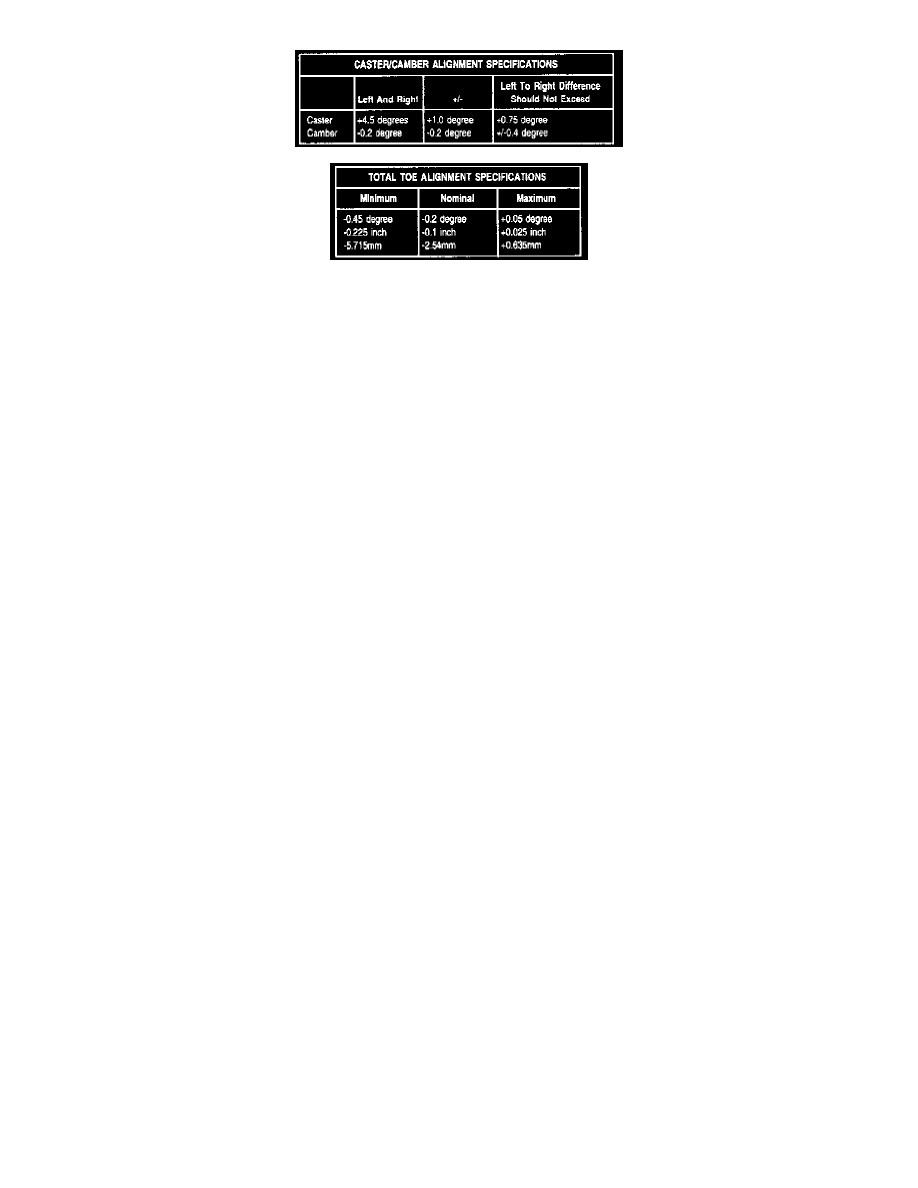Continental V8-4.6L DOHC (1995)

5.
For vehicles exhibiting severe tire wear in less than 19,000 km (12,000 miles), verify the front end alignment is set to the specifications in the
charts as shown.
Technical Service Bulletin # 9662
Date: 960311
Alignment - Drifts And/Or Pulls While Driving
Article No.
96-6-2
03/11/96
ALIGNMENT - DRIFTS AND/OR PULLS WHILE DRIVING - ALIGNMENT PROCEDURES
LINCOLN-MERCURY:
1995-96 CONTINENTAL
ISSUE:
A drift and/or pull condition may be evident on some vehicles. This may be due to the front end alignment values used at the time of vehicle
manufacture.
ACTION:
Perform a front end alignment. Refer to the following Service Procedure for alignment details.
FRONT WHEEL ALIGNMENT CHECKS
Tools Required:
New Generation Star (NGS) Tester 007-00500 or equivalent.
NOTE:
STAR TESTER 007-0041B MAY NOT BE USED.
All wheel alignment readings must be performed on an alignment rack leveled to within 1.59 mm (1/16") side-to-side and front-to-rear and calibrated to
within +/- 0.1 degrees camber and + 0.03 degrees toe. The instrumentation used must be able to compensate for wheel runout and must be able to read
individual (LH and RH) toe measurements.
NOTE:
SET TIRE PRESSURE TO SPECIFICATION.
After vehicle is positioned on alignment rack, the Vehicle Ride Height Setup must be performed before checking or adjusting front end camber and
caster alignment, and before alignment machine sensors are compensated.
Refer to Section 04-05 of the 1995/96 Continental Service Manual for full instructions.
1.
Position vehicle on alignment rack.
2.
The Accurate Trim Test should be used when attempting to measure ride height of the vehicle or before attempting a wheel alignment operation.
This test commands the vehicle dynamics control module to adjust the air suspension such that each corner of the vehicle (LF, RF, LR) is within
+/- 2 mm of design height as defined by the current height sensor adjustment and ride height calibration. No Diagnostic Trouble Codes (DTCs) are
displayed unless a fault is encountered during the accurate trim operation. Upon reaching the nominal ride height, NGS will display "SYSTEM
PASSED". The ride height should then be measured or the alignment procedure performed.
Caster and Camber Adjustment
